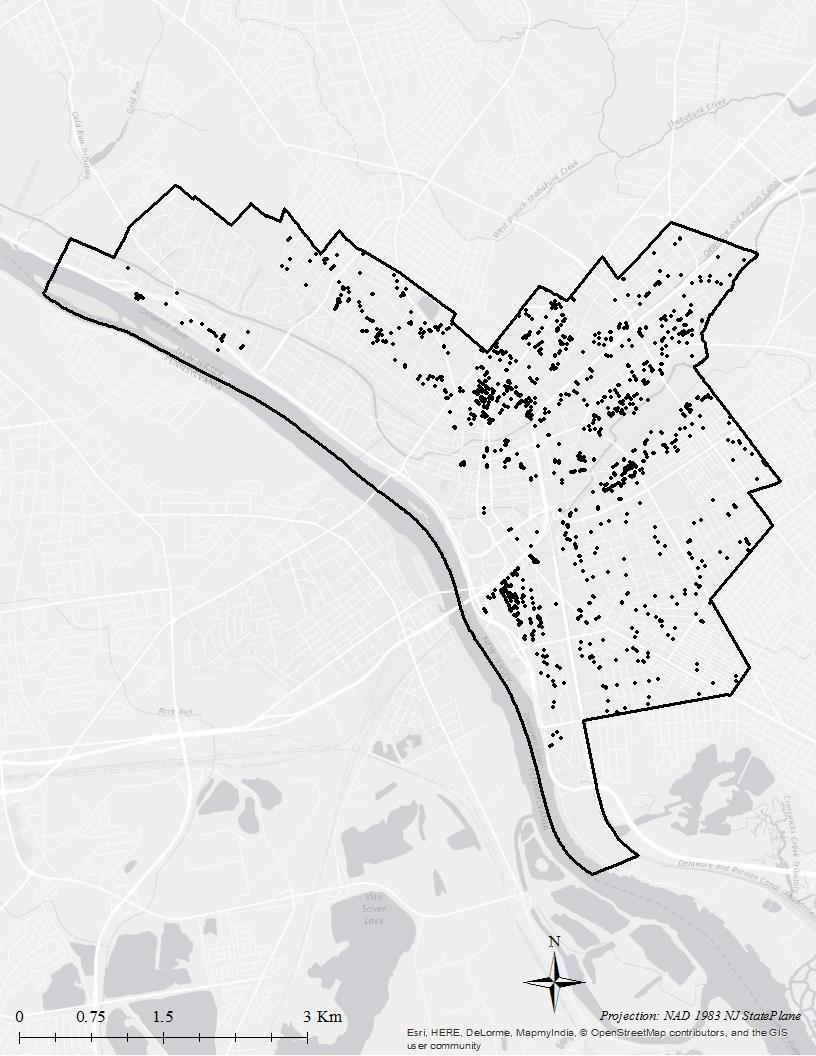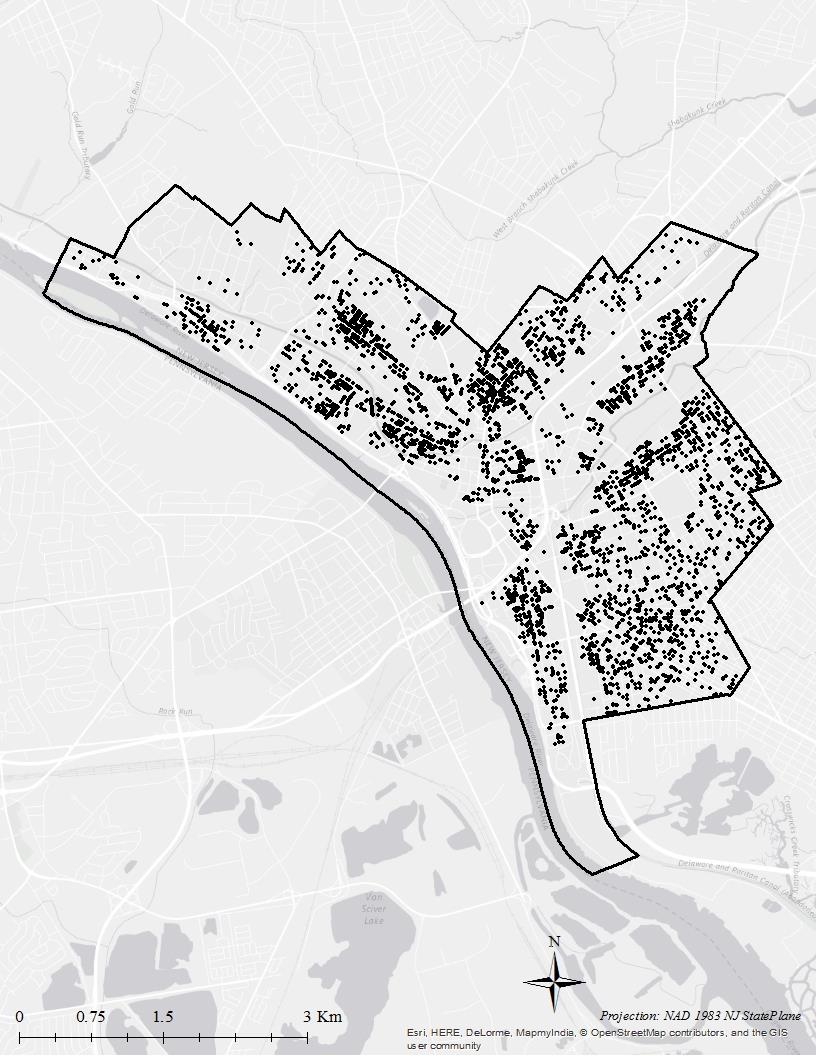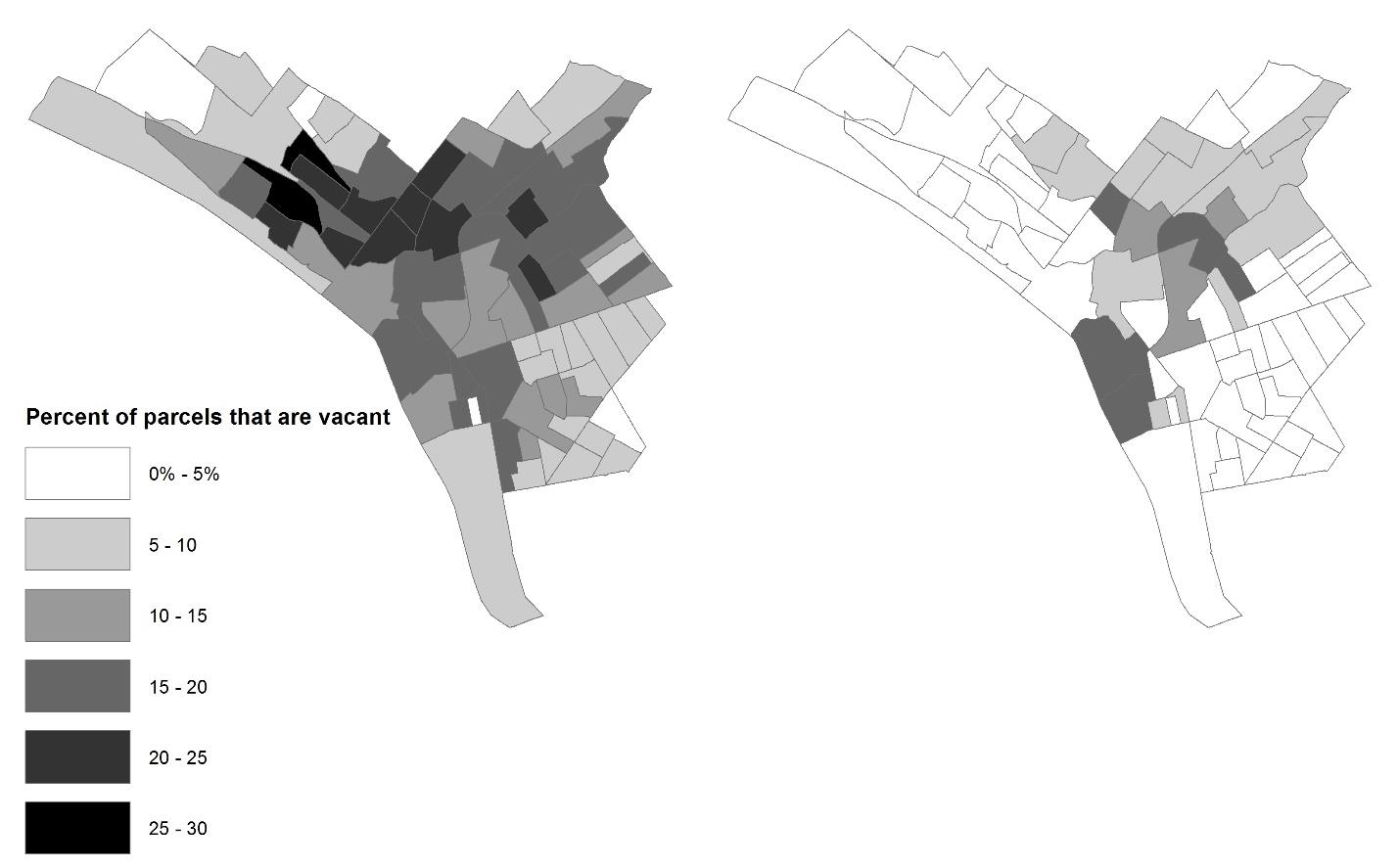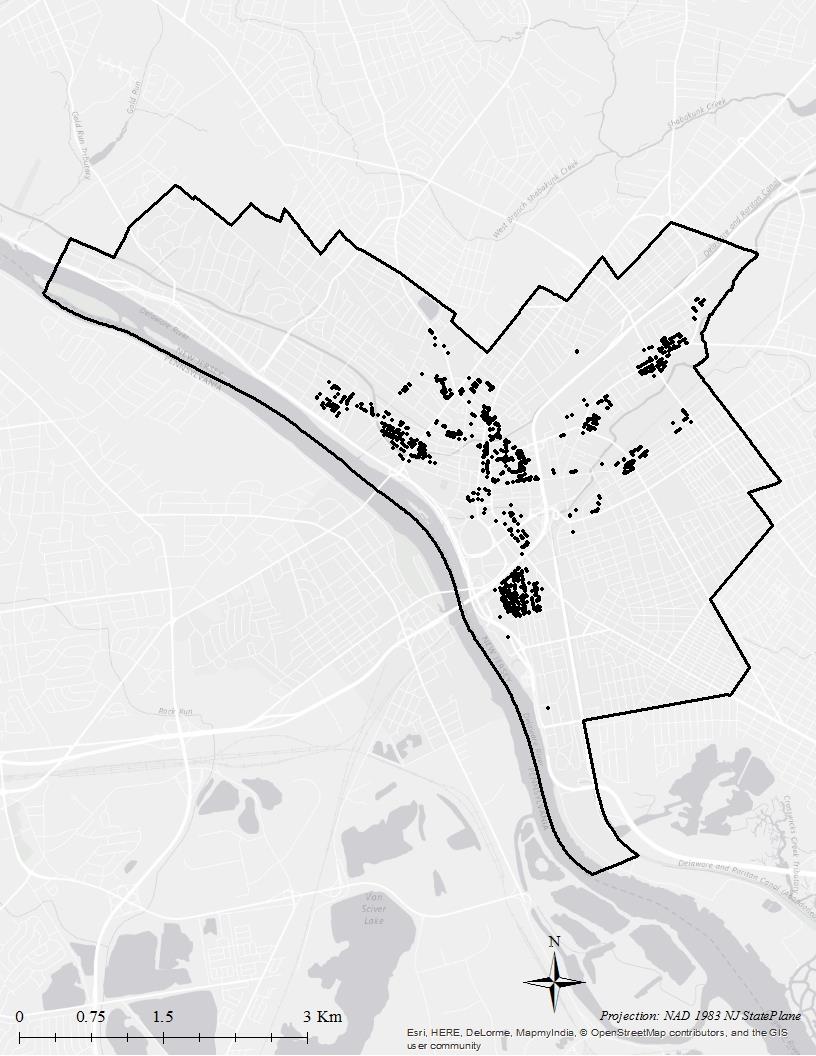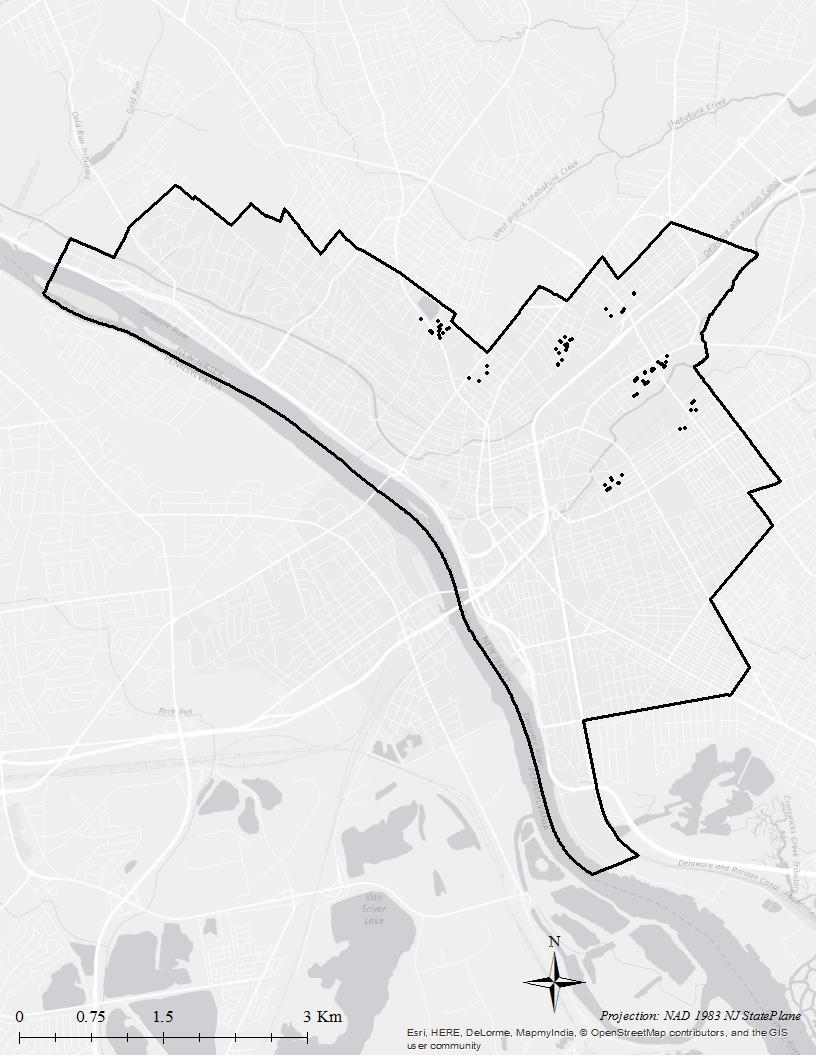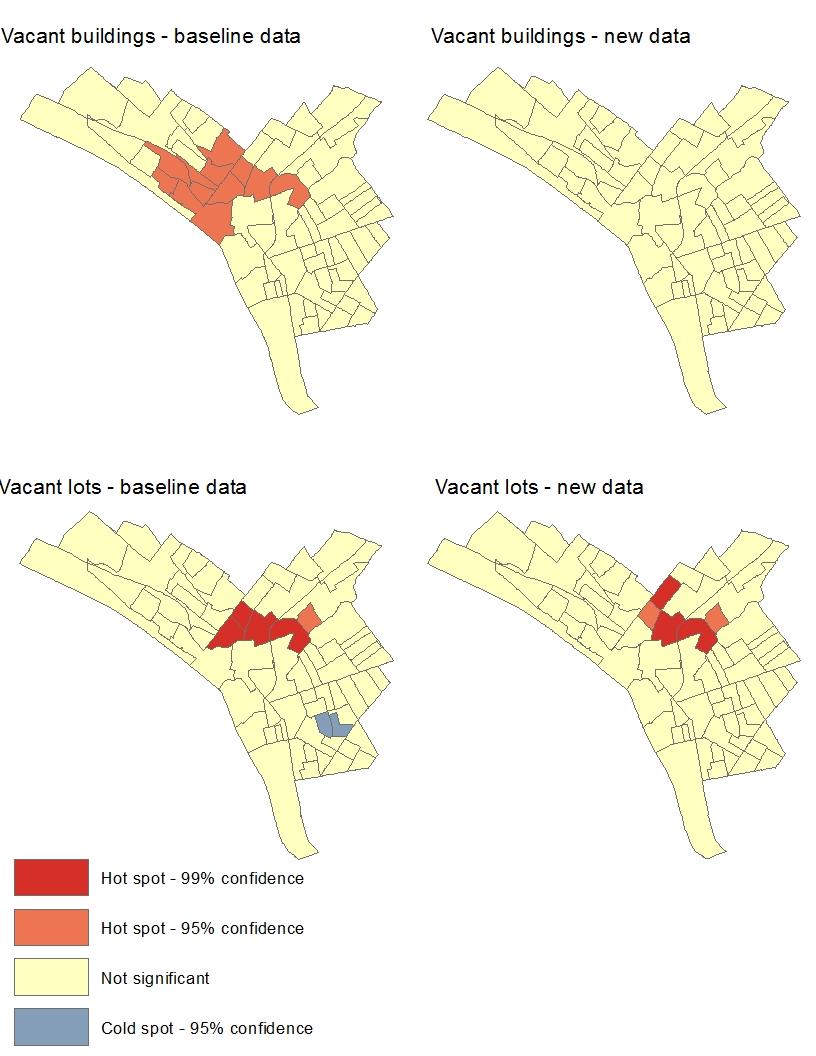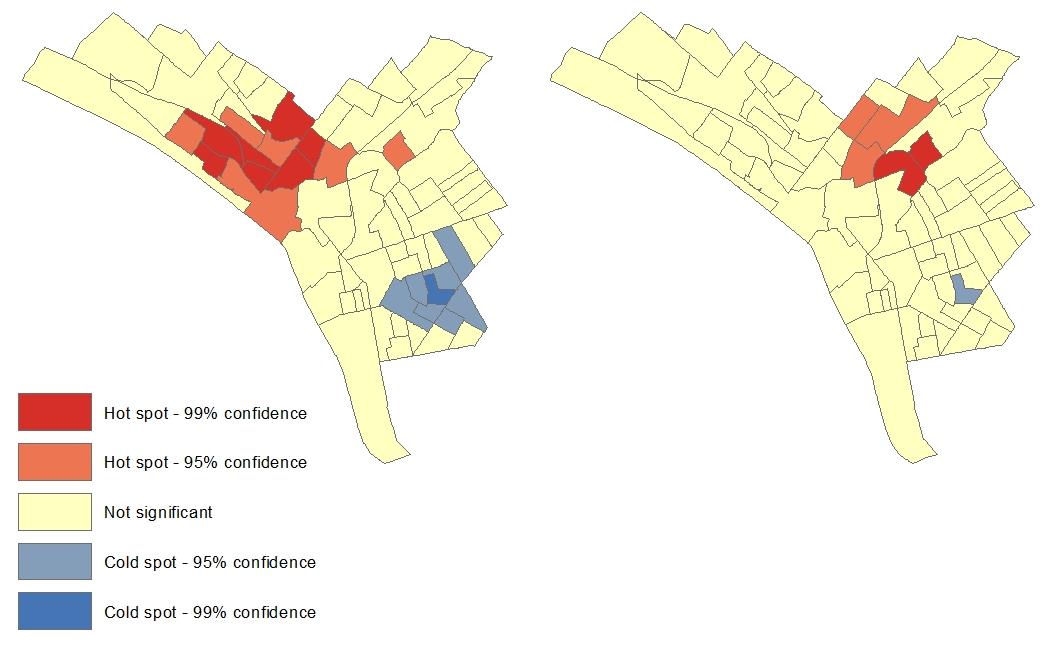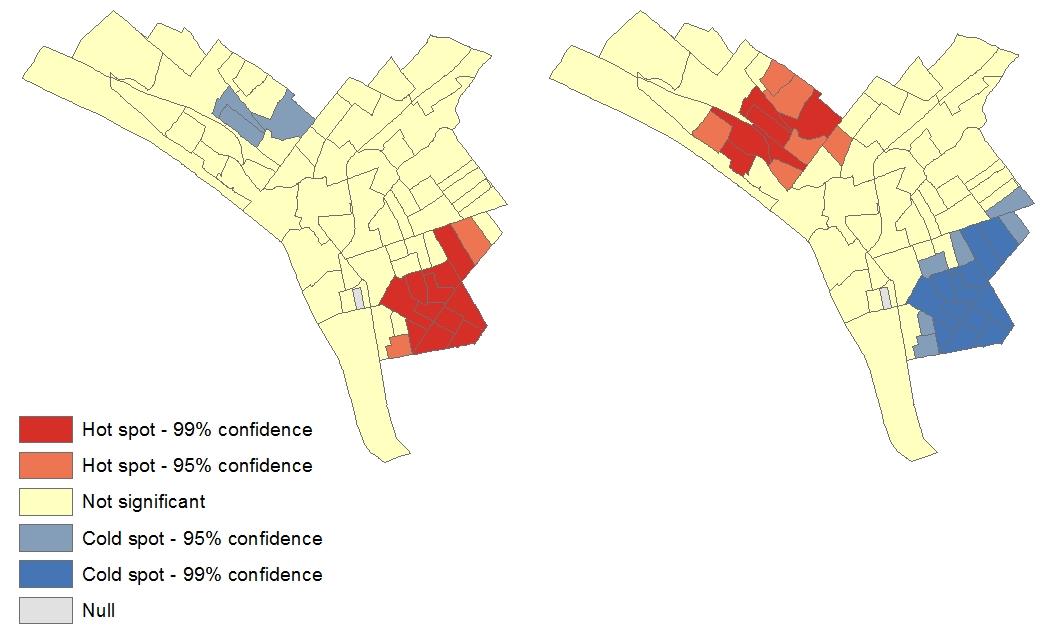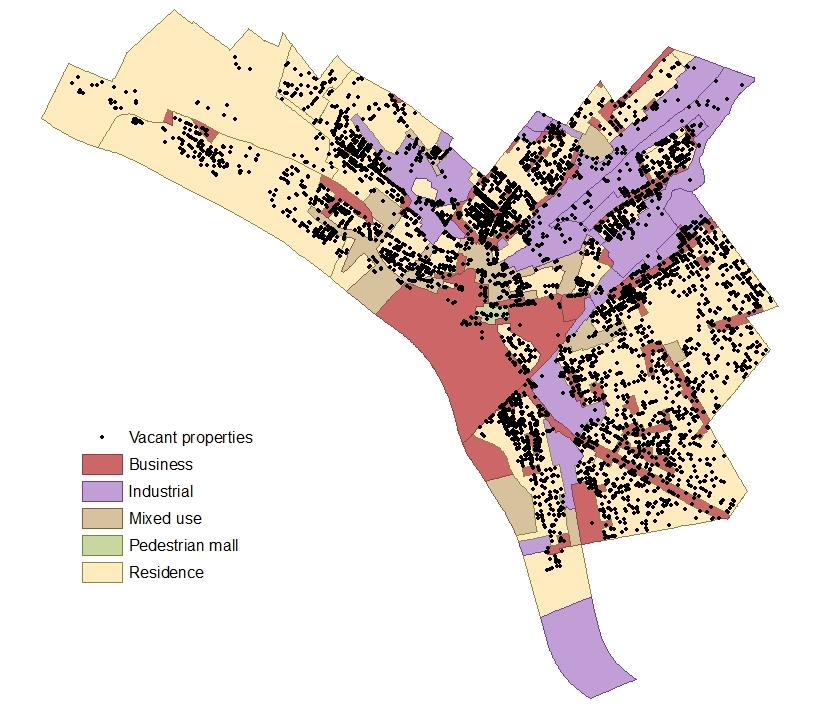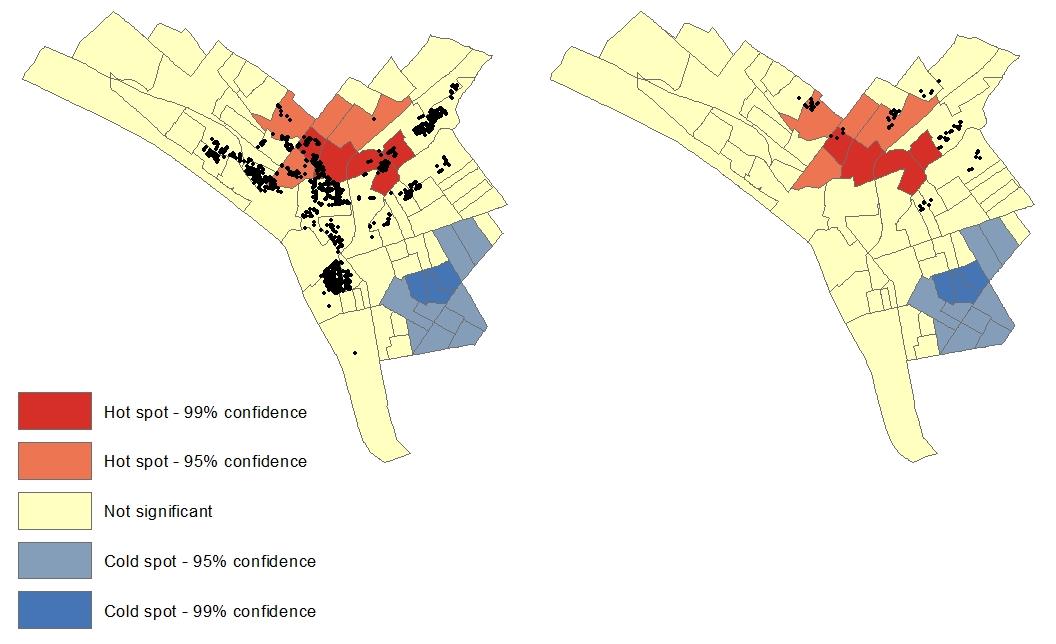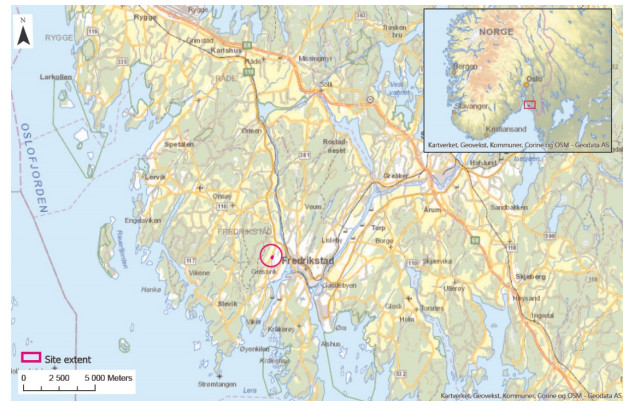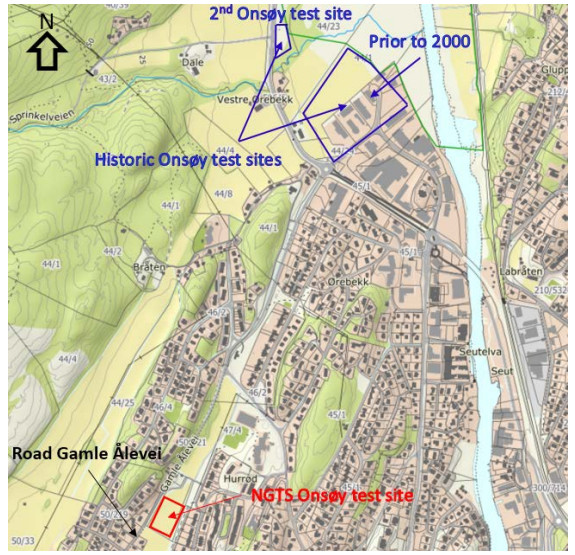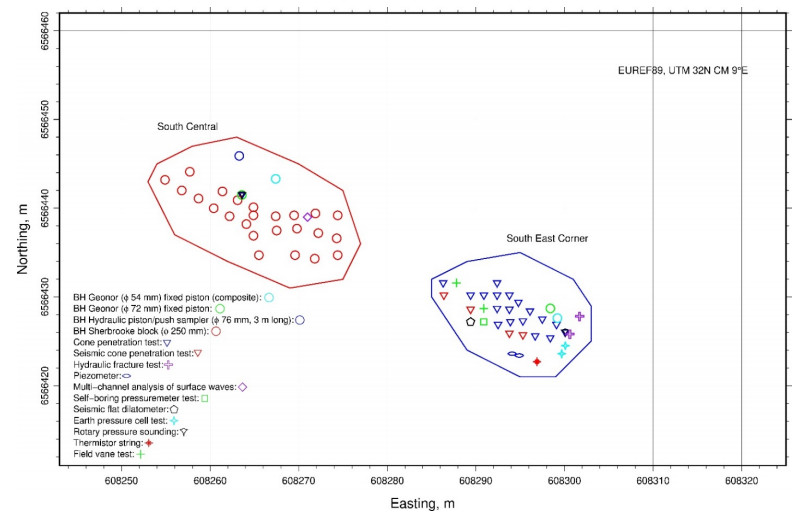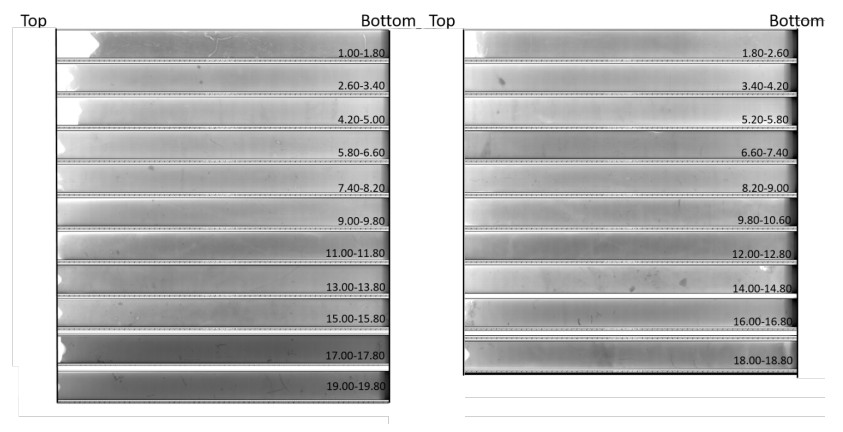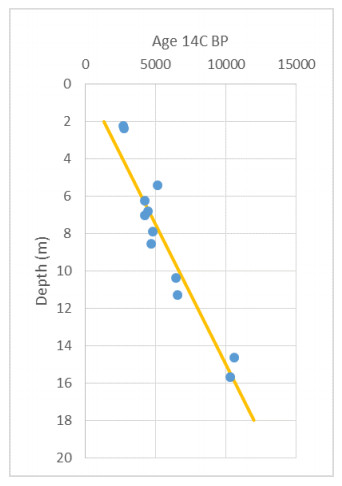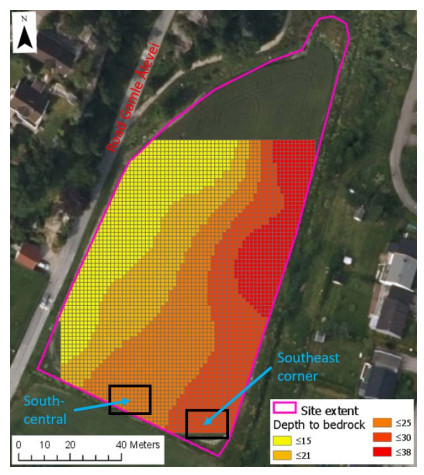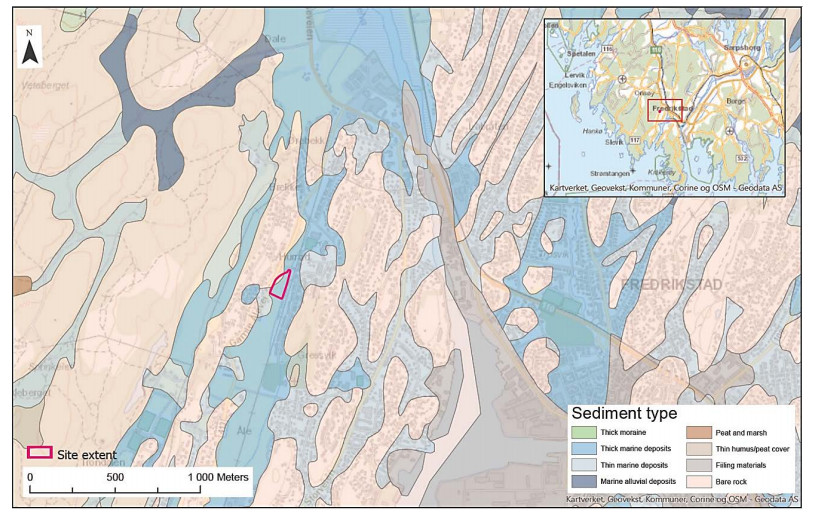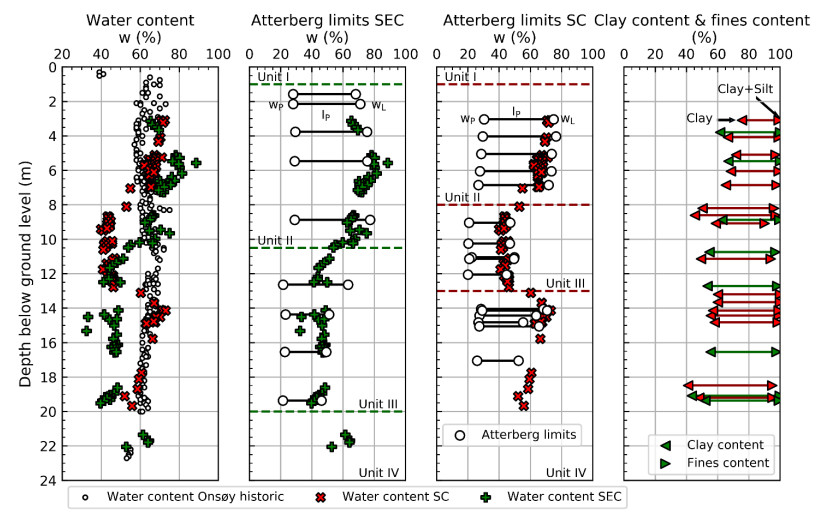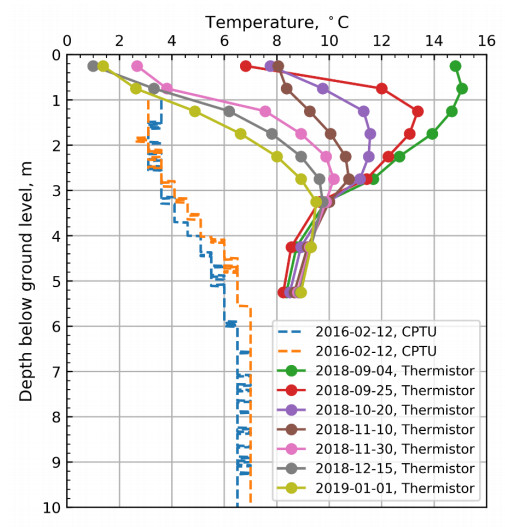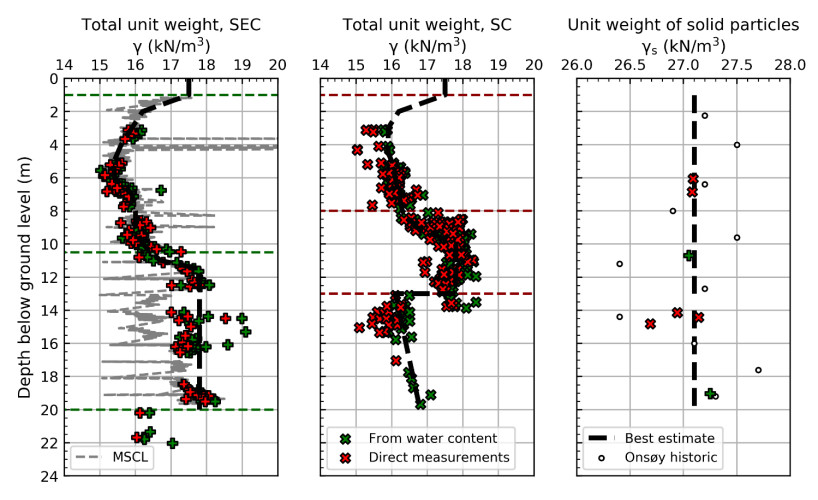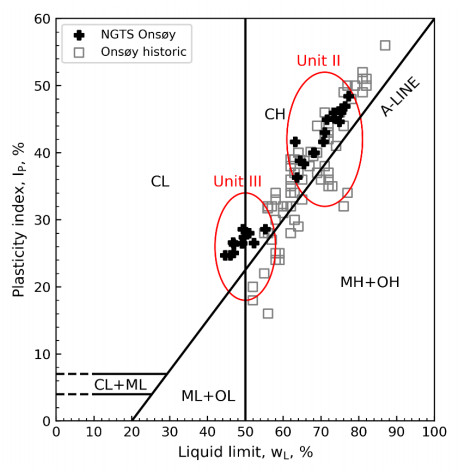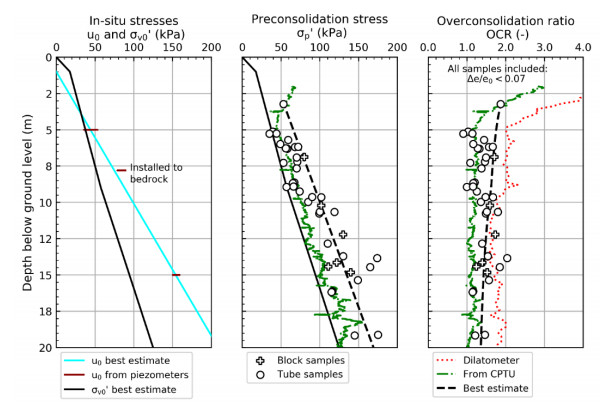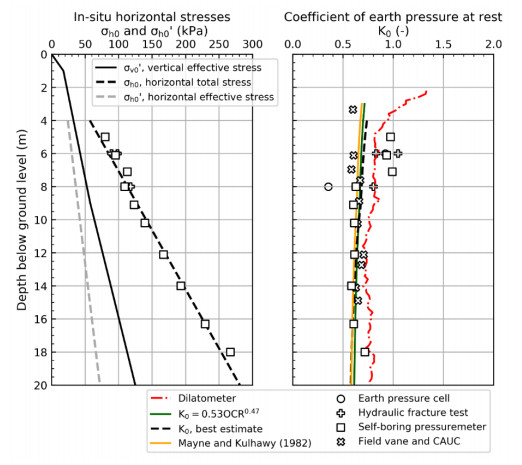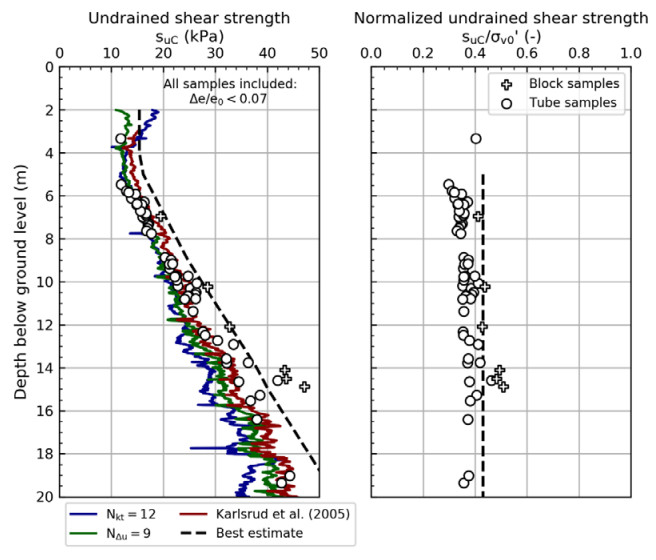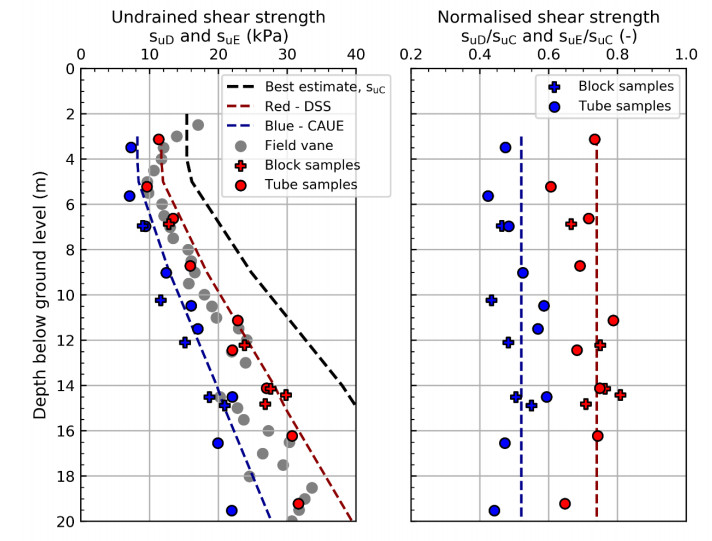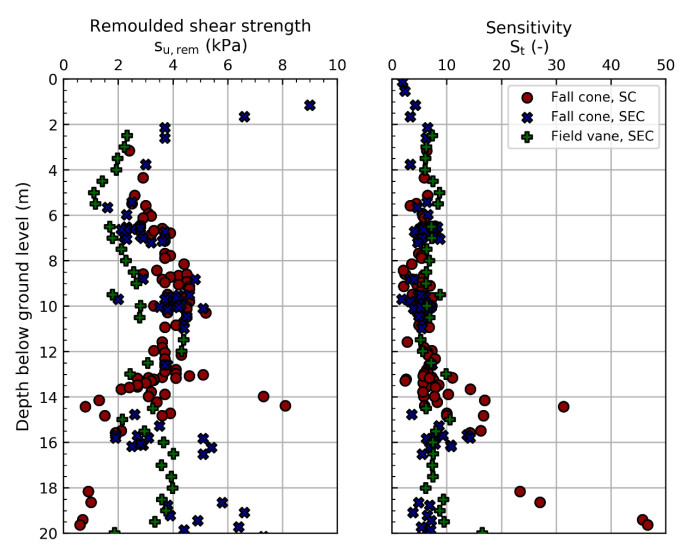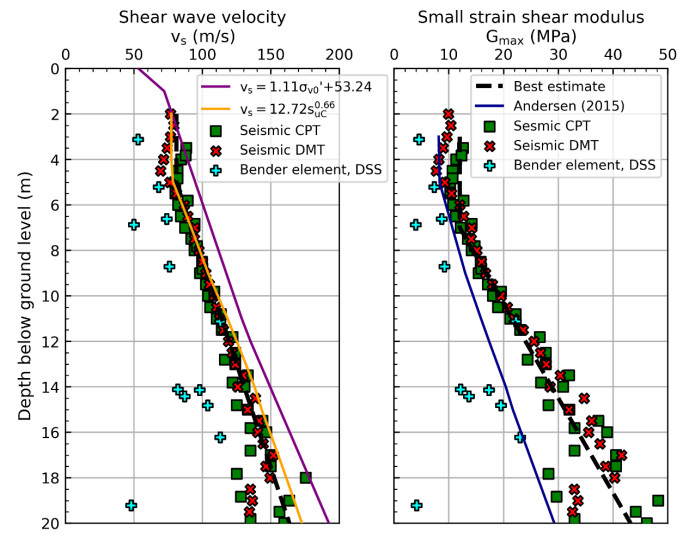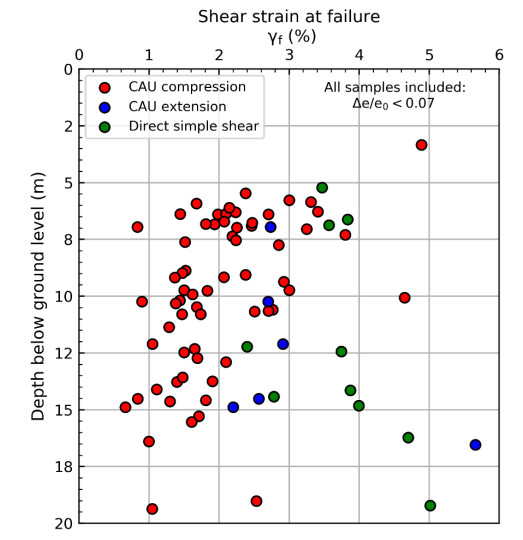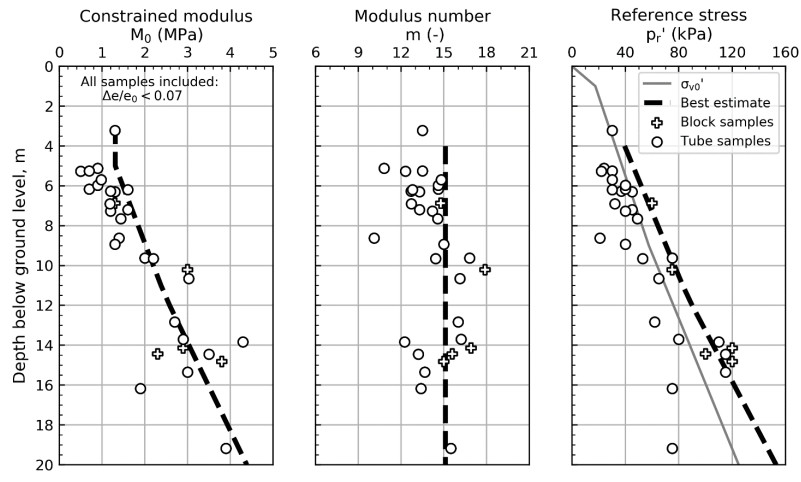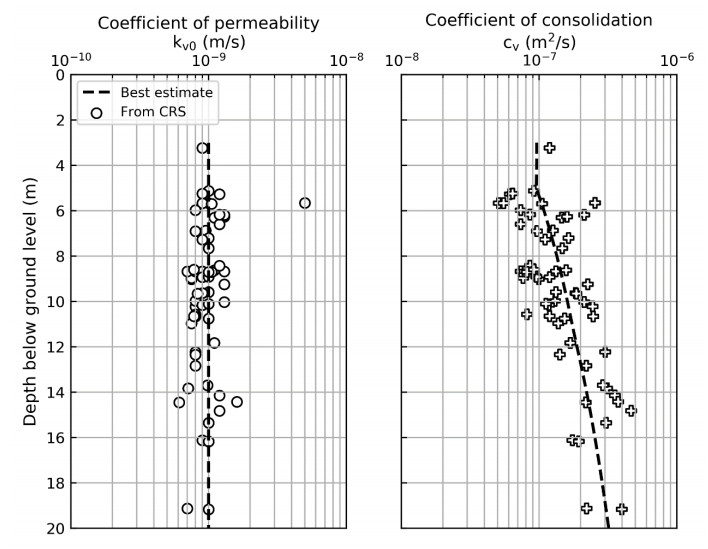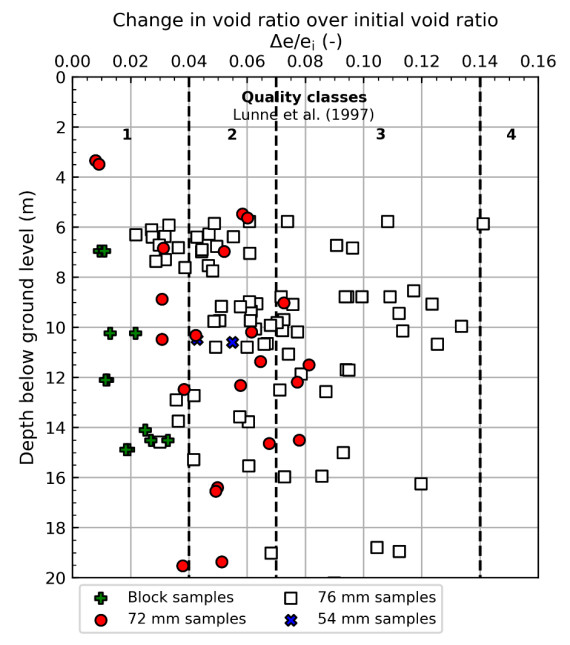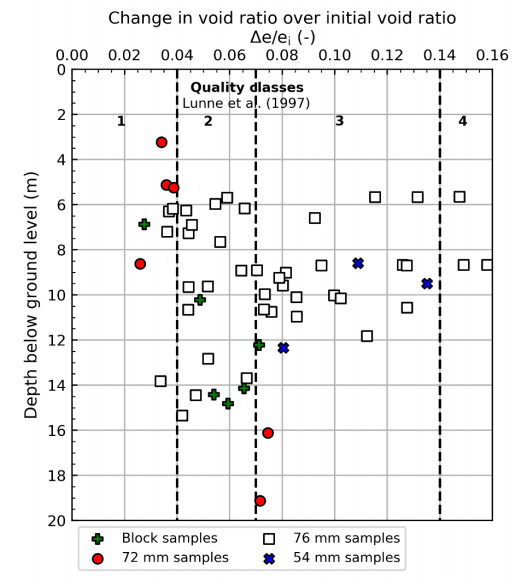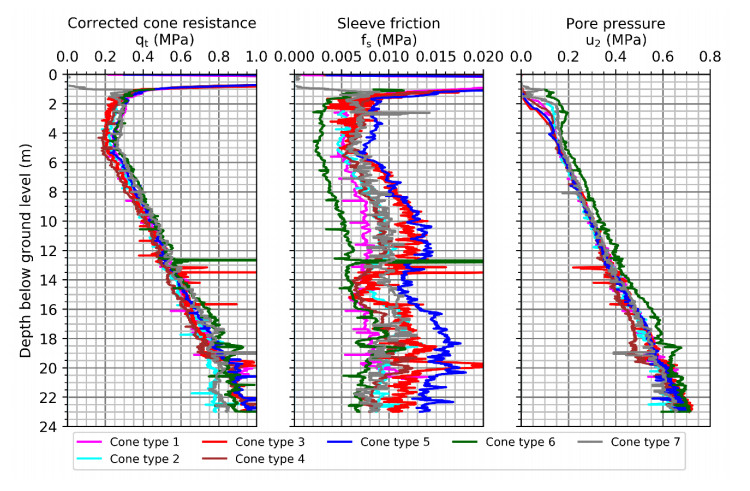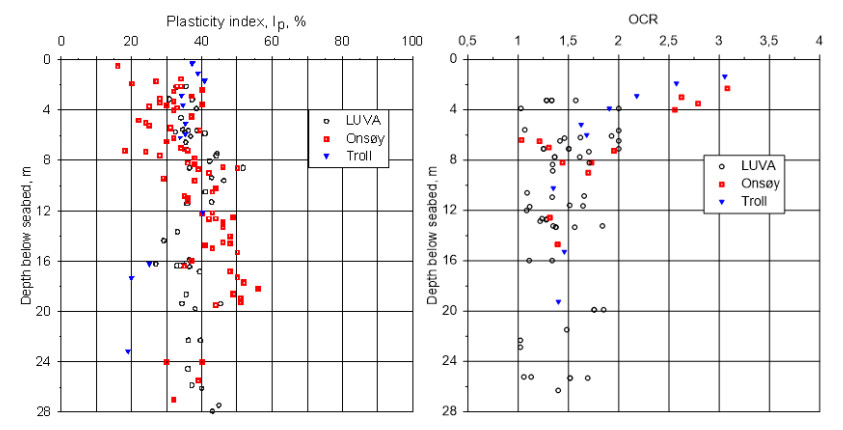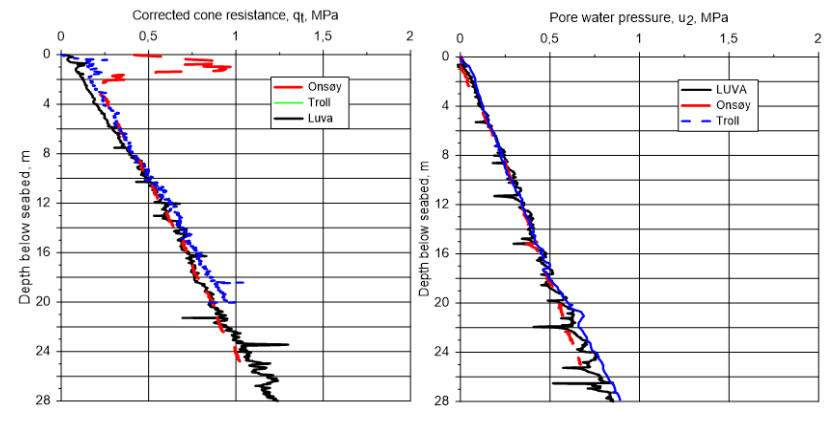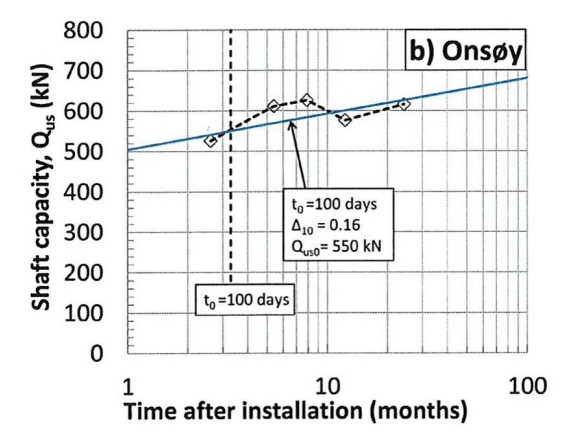1. Introduction
Benefits associated with “greening” urban environments are well documented and include social, economic and environmental outcomes. Urban agriculture is one such approach that has a long history, and in terms of green infrastructure it is relatively inexpensive to implement [1]. Urban green spaces, such as community gardens, provide unique benefits, including reduced stormwater runoff, localized cooling and energy conservation, and for non-food gardens, phytoremediation of polluted soils [2,3,4,5]. The practices that often accompany community gardens—solid waste composting, rain water collection, and organic pest control and cultivation techniques—also reduce resource consumption and negative effects on waste management systems [6]. Furthermore, urban agriculture can be paired with other engineering and design advances such as green roof technology and stormwater interception and reuse [7,8].
Local governments and urban planners often see urban agriculture as an effective re-use of vacant properties, reducing tax burdens while increasing property values [9,10,11]. Non-governmental organizations (NGOs) also look favorably on gardening as a vehicle for the neighborhood revitalization, job training, and food access [12,13,14].In addition to environmental benefits, researchers have observed a range of social benefits, from increased nutrition to improved civic engagement [15,16,17,18]. Taken together, urban agriculture exemplifies the potential for green infrastructure to improve both environmental and human health [19].
Compared to the large body of research describing the benefits associated with urban agriculture, less scholarly attention has been paid to comprehensive urban agriculture planning at the municipal level. Certainly, there is increased attention to food systems planning [20,21], including comparative studies of municipal agency efforts to encourage urban agriculture, such as supportive zoningpolicies [22]. Recently developed decision-making models address vacant land management strategies, which may be of interest to urban agriculture planning [23]. Yet, beyond the invocation to use vacant lots as sites for food production [21], there has been little spatial analysis to identify areas within cities to begin such projects. Furthermore, site selection requires analysis based on attributes that must be carefully considered and defined, such as proximity to schools or access to transportation.
Urban greening is part of a suite of tools that cities are using to become more competitive in the global economy; in this sense, it might even be called trendy [24,25]. Indeed, the concept of “urban eco-tourism” has emerged from these planning practices [26]. However, for urban agriculture to succeed there needs to be a local will to invest because green infrastructure is more easily initiated in places where government and the public strongly support it [27,28]. In post-industrial cities that have not experienced influxes of investment, a different set of processes may be at work. Put simply, urban greening is not as trendy in cities that have not benefited from global economic changes, and where cohesive backing of greening efforts is likely to be more difficult to achieve [29]. Although the phenomenon of “shrinking cities” may create the potential for urban agriculture, these places face numerous challenges that inhibit many green infrastructure projects [30].
As a first step, land inventories are crucial to identify locations of potentially available and strategically located properties [31]. Many efforts to analyze and plan the re-use of vacant lots depend on municipal tax rolls to infer the locations of vacant properties; tax-delinquent properties are assumed to be vacant using that method [32,33]. Local conditions affect where urban agriculture sites might be most beneficial. The selection of suitable sites depends on knowing the locations of vacant properties, as well as attributes such as site conditions that contribute to optimal locations. When urban agriculture is supported by both local government and NGOs, other contextual considerations may also apply; broad objectives will shape the location factors. For instance, when job training is coupled with urban agriculture, low income areas might be prioritized [34]. Effective study of available land and context requires accurate data accessible to governmental and non-governmental decision-makers [35]. For this reason, municipal tax rolls may not be the best data source to identify vacant properties. Instead, field surveys were developed and conducted to identify property types and their attributes.
Successful urban greening implementation—crucially important for urban agriculture—depends on agreement and consensus among stakeholders [36]. Research suggests that collaborations between academic researchers, planning practitioners, and policymakers aids in greening [9,37]. However, this is a complex process that does not always lead to intended outcomes, even when stakeholders agree at the outset. Rational research-based recommendations can be set aside in planning practice because implementation becomes entwined in political objectives [38]. In short, the shift from planning to practice entails a complex collaboration between stakeholders. Public participation is fundamental because it is the residents who ultimately use and maintain most urban agricultural projects. Urban gardening is perhaps one of the most inexpensive urban greening approaches, quite often because the community provides in-kind materials and volunteer labor. In this context, any urban gardening program is difficult to sustain over time without community support [39,40,41,42]. It is arguable that urban greening collaboration among stakeholders must include community organizations and address their concerns and goals in order to sustain long term success. Particularly in post-industrial cities, this raises a twofold need: to recognize multiple purposes of urban greening among diverse stakeholders; and to involve communities in the redevelopment greening process [43].
This paper reports on an applied project that integrated the needs and capacities of municipal government, which lacked current data on vacant properties; an NGO, with goals to develop urban agriculture based on local knowledge about key social and environmental issues; and a university, which had the means to conduct a property survey and analysis. In sum, this study integrated research with urban planning and healthy food access. This research illustrates the important considerations in systematically surveying available vacant land for urban greening. It is the result of an effort to create an accurate vacant property inventory of Trenton, New Jersey, in order to support urban agriculture and broader food system goals of local partners in that city. The authors started with two research questions: where are the vacant properties in Trenton, and which properties are most suitable for urban agriculture and food systems planning?
Trenton is the capital of New Jersey and the state’s second largest city, with a population of 84,349. 1 (1 2013 population estimate, U.S. Census Bureau.) Cities like Trenton are rebuilding economies devastated by the departure of manufacturing, alleviate poverty, and address environmental contamination, and so greening is entwined with a range of social and economic concerns [44]. Residents, local NGOs, and government agencies concerned with social equity could, nevertheless, hesitate to implement green solutions because of fears of gentrification [45,46,47]. At the same time, local governments face constrained budgets and often prioritize revenue generation regardless of the potential loss of positive social impacts [48]. Rutgers faculty partnered with Isles, Inc., an NGO that has worked in Trenton for over 30 years and has developed rich knowledge of the issues facing the City’s stakeholders. Isles previously conducted a pilot study to identify vacant properties. These original data were comprised of partial field surveys and municipal vacant property lists. However, the dataset did not cover the entire city, Isles staff reported some duplicate entries of vacant properties, and the data were 6 years old. For these reasons, a comprehensive single survey was needed. The partnership aided research design and data collection by helping identify and classify properties and attributes.
2. Methods
2.1. Vacant property survey
In order to collect accurate data on vacant land to serve the interests of the municipal, NGO, and academic partners, the team conducted field surveys of 31,161 properties using a multiple-platform geographic information systems (GIS) technique. Surveyors visited each parcel to make in situ observations about each parcel. They collected data using the ArcGIS Collector application, with maps prepared in advance using ArcGIS Desktop and ArcGIS Online. Teams were assigned specific routes that eliminated the possibility of duplicate data entries. Collected data were downloaded daily by the research team and any missed parcels were reassigned weekly for additional data collection. The parcel data were then compiled into a geodatabase. This survey involved collaboration between faculty and students from Rutgers University, staff from Isles, Inc., the City of Trenton, and community volunteers. To survey every Trenton parcel, these surveyors worked in teams of twos or threes and were assigned to specific neighborhoods during June and July 2014. On each team one person entered property attributes into a GIS smartphone application, while the other individuals defined property characteristics. Student interns and neighborhood resident participants attended a one-day training conducted by Isles to learn how to visually categorize Trenton property characteristics.
The parcel typology and underlying attributes were developed by Isles staff based on criteria in New Jersey’s Abandoned Properties Rehabilitation Act (APRA), Isles’ local knowledge of Trenton, and the policy tools available to the City of Trenton and community groups (see Supplementary Methods and Table S1). For each parcel, surveyors entered one out of seven possible parcel types. For most parcel types, additional attributes on parcel conditions were entered, such as signs of dumping or the structural conditions of vacant buildings. The research team identified vacant lots in two steps: first, surveyors identified lots as parcels without structures; then, secondary analysis selected those lots which were unmaintained (weeds over 2.5 feet high (0.76 m)) to define them as vacant lots.
Data were analyzed using both the type of parcel and the additional attributes. However, not all attributes were entered for each lot. Although the surveyors were trained to enter all data prompts that were provided, only first-level classification was absolutely required. Parcels that were recorded as lots, but lacked designation as either maintained or unmaintained (371), were omitted from the analysis; although first-level classification was collected on 31,161 parcels, the analysis is based on 30,790 parcels.
Although these attributes provided more comprehensive assessments than previous studies, there were some limitations in the survey data. For legal and safety reasons, surveyors were forbidden from entering buildings or trespassing on properties. To ensure that they entered observations against the correct parcel, surveyors recorded their observations from the front of properties rather than observing all sides. Therefore, significant damage could have been unnoticed. Additionally, all observations occurred during the day, meaning that observers could not double-check whether an apparently-vacant property was actually occupied by whether lights were on after dark. As the first survey of its kind in Trenton, this limitation was considered acceptable to Isles staff and municipal partners.
To assess the accuracy of the data collection, 10% of the parcels were randomly selected for quality control by checking the assigned characteristics of these parcels against the most recent Google Earth and Google Street View imagery, which was 1 year older than the actual field survey. Since land use could have changed since the images were captured, quality control was limited to whether parcels marked as vacant lots in our database appeared as buildings or other land uses in the satellite imagery. Out of the 300 parcels that were checked, 21 parcels (7%) might have been incorrectly recorded. Therefore, any parcel identified for repurposing must be re-inspected before final reuse decisions are made.
2.2. Suitability modeling
GIS modeling tools supported systematic location analysis given a set of selection criteria for sites suitable for urban agriculture [49]. Suitability modeling was completed by students for a service-learning project in the Advanced Environmental Geomatics course at Rutgers University. Students identified model criteria by learning about key issues from Isles staff and through assigned readings of scholarly literature on participatory GIS methods, urban agriculture, and food security reports from Trenton [50,51,52]. Model criteria were chosen to identify properties based on their spatial relationships to food system factors such as access to transportation, school locations, and socio-demographic characteristics. Model outputs suggested which surveyed locations of vacant properties might present opportunities for improved food options.
2.3. Spatial statistics
Researchers conducted three categories of analysis: comparisons between the baseline and new datasets; additional analyses on the new dataset, and comparison of model outputs to the new dataset. The mean center and standard distance of the baseline and new datasets were compared with independent samples t-tests under assumptions of both equal and unequal variances to determine if the prior method achieved the same accuracy of the new citywide survey. Standard distance was compared with F-tests. The mean center was calculated from the x and y coordinates of each feature in a dataset. Standard distance was a spatial equivalent of standard deviation and it measured the compactness of the features. The standard distance value indicated the extent that distances between features and the mean center vary from the average distance to the center.
Spatial patterns and clusters were identified in the baseline and new datasets based on the number of vacant buildings and vacant lots per hectare within Trenton’s Census block groups. Hectare was used as the basis for comparison because the baseline data were based on addresses and the new data were based on parcels. The baseline data were assigned x-y point coordinates that corresponded to addresses. Using the available data from state, county, and municipal sources, addresses were geocoded by interpolating the location of the address number between the values of line segment endpoints in GIS. Therefore, point locations of address-based vacant property data were created from line ESRI shapefiles. However, due to the interpolation method of geocoding, there was no population of discrete addresses—no total number of addresses by which to calculate percentage of vacant properties.
Patterns and clusters in the baseline and new datasets were tested using global and local techniques. Getis-Ord General G was used to test whether spatial patterns existed against a null hypothesis that features are randomly distributed. These tests explained the pattern of the overall study area in terms of if the data were clustered, dispersed, or random. Getis-Ord Gi* was used to identify which areas within Trenton were “hot spots” (clusters of high vacancy rates) and “cold spots” (clusters of low vacancy rates). Row standardization was used for both types of tests. Getis-Ord Gi* also used false discovery rate correction to increase the difficulty for the test to be statistically significant, since block groups at the edges of the study area had fewer neighbors and may thus skew the distribution of values.
Further tests were performed on the new dataset using percentages of vacant parcels in each census block group surveyed as vacant building or lot. Since sizes of the 30,790 parcels in the sample frame varied (mean = 465 m2, SD = 4,226 m2), percentage of vacant parcels was more accurate than the vacancies per hectare that was used in the comparisons of the old and new data. Getis-Ord General G was used to identify whether a spatial pattern existed in the entire dataset, and Getis-Ord Gi* was used to identify if any block groups were clusters of high or low percentages of vacant parcels.
Pearson’s correlation coefficients were calculated between rates of vacant buildings and lots with median household income (census block group and tract levels) and percent of families living below the federal poverty level (census tract level). Ordinary least squares (OLS) regression was calculated for percent of parcels surveyed as vacant buildings (dependent variable) and percent of families living below the federal poverty level (independent variable). Prior to OLS, spatial autocorrelation of variables was calculated using Moran’s I. Use of spatially-autocorrelated independent variables risked imposing the spatial structure onto the regression model instead of calculating the true relationship between dependent and independent variables. OLS was thus only used between vacant building rate and poverty rate because Moran’s I indicated significant spatial autocorrelation of vacant lot rate at the block group and tract levels and of vacant building rate at the block group level.
To evaluate the model outputs, which represented a sample of the total surveyed vacant parcels, we compared the number of suitable properties in each model to clusters of vacant properties shown in the survey data. Getis-Ord Gi* was used to identify clusters of aggregate vacant parcels by block group (vacant buildings and lots) because models were calculated with aggregate vacant properties.
There were 70 census block groups and 25 census tracts in Trenton. Block groups were used for spatial statistics when census data were available at that level because spatial statistics are more reliable when there are at least 30 features. There were spatial errors between the boundaries of the census Tiger/line spatial data used in the analyses and the more accurate City of Trenton spatial data [53]. This reduced the number of vacant properties available for analysis with census data because they were outside the census boundaries for Trenton. In the baseline data, 3,223 addresses out of 3,340 were used for spatial statistics. In the new data, 30,759 parcels out of 30,790 were used to calculate vacancy rates.
3. Results
3.1. Survey results
Including the occupied buildings, community gardens, parks, maintained lots, and utilities, the majority of Trenton’s parcels are occupied or currently used for food production and green space. Of the 30,790 parcels considered for analysis, 25,032 (81%), are currently in use (Figure 1). 1,376 parcels (4%) were vacant lots (Figure 2), and there were 3,850 vacant buildings (Figure 3). The calculation of vacant buildings was based first in identification of 4,085 parcels (13%) that were recorded as completely vacant buildings or buildings with vacant ground floors. Additional analysis determined the number of discrete vacant buildings because some individual buildings covered multiple parcels. Vacancy rates were calculated by percent of parcels in each block group that were surveyed as vacant building or vacant lot (Figure 4).
In the secondary-level characterization, surveyors determined whether vacant buildings needed rehabilitation (none, moderate, or significant; Table S1). The structural conditions of 4,038 parcels were noted, of which 81% needed little or no rehabilitation (42% did not visually appear to require rehabilitation, and 39% appeared to be in need of moderate rehabilitation); 19% obviously needed significant rehabilitation.
3.2. Suitability modeling
The suitability models selected vacant properties from the surveyed data based on criteria explained below. These models illustrated GIS modeling capabilities, but were not meant to be final recommendations for particular sites. To be effective, this type of modeling requires intimate knowledge of local food access issues. The model outputs showed how the selection and weighting of various criteria can affect decision-making. As a student service-learning project, models were intended to be guides rather than prescriptive, and local partners must select criteria that will best reflect the needs of residents and rerun the models using these criteria.
The first GIS model prioritized criteria reflecting social and transportation variables. However, certain factors were considered to be more important than others, and so higher weights were given to prioritize transit, redevelopment areas2 (2 Redevelopment areas are sections that municipal government targets with incentives for business and residential development.), population density, and proximity to existing food businesses. The equation used for this model was:
|
Suitability score (Model 1) = T + R + P + F + S + Pr + Pk
|
(1) |
Where,
T = Transit score × weight factor of 4;
R = Redevelopment score × weight factor of 3;
P = Population density score × weight factor of 3;
F = Food business score × weight factor of 2;
S = Proximity to schools score;
Pr = Proximity to parks score;
Pk = Proximity to parking lots score
Proximity to transit stops was given a weight of 4 since local partners prioritized the issue of transportation because low automobile ownership rates (~30%) and dependence on public transportation constrained food shopping choices in Trenton. Redevelopment areas and areas with a higher population density were given a weight factor of 3 because of potential municipal funding and the ability to reach a larger customer base, respectively. Existing healthy food businesses were given a priority weight of 2 in an effort to build clusters of healthy food options. Schools, parks, and parking lots were given no weight because these were baseline criteria. Model 1 identified 1,319 vacant properties suitable for food-related redevelopment (Figure 5).
The second model focused on food production in vacant lots and used environmental data as criteria. Drawing on publicly-available environmental datasets, criteria included sites that were free of soil and water contamination, as well as optimal aspect and slope of abandoned lots. This model identified vacant lots that were not within 1/8th mile (201 m) of industrial zones or brownfields, were flat or slightly sloped to prevent erosion, and prioritized southward-facing aspects to capture the most sunlight during the growing season. 97 vacant lots were identified using this model (Figure 6). The equation used for this model was:
|
Suitability score (Model 2) = P + S1 + S2 + S3 + S4 + A1 + A2 + A3 + A4 + A5 + A6 + A7 + A8 + A9
|
Where,
P = Sites more than 0.125 miles (0.201 km) from industrial zones or brownfields
S1 = Slope between 0 and 1.168 degrees × weight factor of 4
S2 = Slope between 1.168 and 3.212 degrees × weight factor of 3
S3 = Slope between 3.212 and 7.154 degrees × weight factor of 2
S4 = Slope between 7.154 and 18.617 degrees × weight factor of 1 (Slopes > 18.617 were given weight factor of 0)
A1 = Aspect between -0.2015049101 and 22.5 × weight factor of 2
A2 = Aspect between 22.5 and 67.5 × weight factor of 3
A3 = Aspect between 67.5 and 112.5 × weight factor of 5
A4 = Aspect between 112.5 and 157.5 × weight factor of 7
A5 = Aspect between 157.5 and 202.5 × weight factor of 9
A6 = Aspect between 202.5 and 247.5 × weight factor of 8
A7 = Aspect between 247.5 and 292.5 × weight factor of 6
A8 = Aspect between 292.5 and 337.5 × weight factor of 4
A9 = Aspect between 337.5 and 360 × weight factor of 1
3.3. Spatial statistics
3.3.1. Comparisons of baseline and new data
The baseline data had 3,340 vacant properties (883 vacant lots and 2,457 vacant buildings). The new data had 5,226 vacant properties (1,376 vacant lots and 3,850 vacant buildings). The mean geographic centers of the two datasets were significantly different (mean x coordinates: t(7504) = −6.103, p < 0.01; mean y coordinates: t(7811) = 6.146, p < 0.01). The baseline data had a standard distance of 1,529 m and the new data had a standard distance of 1,797 m. F test indicated a significant difference between the standard distances of the baseline and new data (F = 1.38, p < 0.05).
3.3.2. Comparing baseline and new data by measuring vacant buildings and lots per hectare
Observed Getis-Ord General G values were greater than the expected values in the baseline and new data. Thus, vacant buildings and lots were significantly clustered in terms of vacancies per hectare (Table 1).
Table 1. Getis-Ord General G tests of baseline and new data, vacancy rates per hectare.
| Dataset | Observed General G | Expected General G | Pattern |
| Vacant building rate | | | |
| Baseline data | 0.022 (z = 4.68; p < 0.01) | 0.014 | High values clustered |
| New data | 0.046 (z = 2.84; p < 0.01) | 0.014 | High values clustered |
| Vacant lot rate | | | |
| Baseline data | 0.023 (z = 5.39; p < 0.01) | 0.014 | High values clustered |
| New data | 0.022 (z = 4.01; p < 0.01) | 0.014 | High values clustered |
In the baseline data, 11 block groups out of 70 were identified as “hot spots, ” or clusters of vacant buildings (p < 0.5) (Figure 7). No block groups were identified as “cold spots, ” or clusters of low percentages of vacant buildings, with greater than 95% confidence. In the new data, there were no clusters of vacant buildings identified with greater than 95% confidence.
There were five block groups as hot spots of vacant lots (p < 0.05) and two block groups as cold spots (p < 0.05) in the baseline data. In the new data, five block groups were identified as clusters of vacant lots (p < 0.05). There were no matching block groups of vacant building clusters between the two datasets. In terms of vacant lot clusters, between the baseline and new data four block groups were identified as the same vacant lot clusters.
3.3.3. Further analysis of new data based on vacancy rate by parcel
Observed Getis-Ord General G values were compared to the expected values. For vacant building rate, the observed G-statistic was 0.016 (z = 5.75; p < 0.01) and expected value was 0.014. For vacant lot rate, the observed G-statistic was 0.022 (z = 5.08; p < 0.01) and expected value was 0.014. Since the observed values were greater than the expected values, this test indicated that high percentages of vacant buildings and vacant lots were clustered.
The authors identified 13 out of 70 block groups (19%) as clusters of high percentages of vacant buildings (p < 0.05), and 6 out of 70 block groups (9%) were identified as clusters of low percentages of vacant buildings (p < 0.05) (Figure 8). For vacant lots, 5 block groups (7%) were identified as clusters of high percentages of vacant lots (p < 0.05), and one block group was identified as a cluster of low percentage of vacant lots (p < 0.05). Two block groups were identified as significant “hot spots” of both vacant buildings and lots. One block group was a significant “cold spot” of both vacant buildings and lots.
The team calculated spatial clusters of vacant buildings’ structural condition with the Getis-Ord Gi* test, based on the percentage of vacant building parcels marked as needing no, moderate, or significant rehabilitation. Results were polarized between clusters of vacant buildings requiring either no or significant rehabilitation (Figure 9). There were no significant clusters of vacant buildings needing moderate rehabilitation.
Another overlay provided an opportunity to study vacant properties according to zoning categories (Figure 10). Using GIS zoning files provided by the City of Trenton, the numbers of vacant lots and buildings in each zone and the percent of vacant parcels in each zone (Table 2) were identified. Most vacant properties were in residential areas: 60% of vacant lots and 75% of vacant buildings. Vacancy rates, measured by percent of vacant parcels in each zone, were lowest in residential areas because of the high total numbers of parcels. However, there was no significant relationship between zone and the percent of parcels surveyed as vacant building or lot, using ANOVA.
Table 2. Vacant properties by planning zone.
| Zone | Vacant lots | Vacant lot rate (percent of parcels) | Vacant buildings | Vacant building rate (percent of parcels) | Total |
| Business | 261 | 6% | 580 | 15% | 818 |
| Industrial | 227 | 13 | 196 | 14 | 401 |
| Mixed use | 59 | 5 | 177 | 17 | 228 |
| Residence | 829 | 3 | 2,880 | 13 | 3,695 |
| Total | 1,376 | | 3,833 | | 5,142 |
Rates of vacant parcels were tested against median household income and poverty rate. Percent of parcels surveyed as vacant was negatively correlated with median household income by census block group (vacant building rate (r = −0.372, p < 0.01); vacant lot rate (r = −0.277, p < 0.05)). However, Moran’s I indicated significant spatial autocorrelation of median household income at the block group level. At the Census tract level, there was no significant relationship between median household income and either vacant buildings or lots.
Relationships were stronger when poverty rate was the economic indicator. Percent of families living below the federal poverty level in each census tract was positively correlated with rate of vacant building parcels (r = 0.685, p < 0.01) and rate of vacant lot parcels (r = 0.697, p < 0.01). For vacant building rate, a significant regression equation was found (F(1,23) = 20.37, p < 0.001), with an r2 of 0.47. There was no spatial autocorrelation of residuals.
3.3.4. Evaluation of suitability models
Overlays of model outputs with clusters of total vacant parcels are shown in Figure 11. 339 properties out of the 1,319 identified in Model 1 (26%) were located within block groups identified as hot spots of vacant properties. 33 properties out of the 97 identified in Model 2 (34%) were located within hot spots. There were no suitable properties identified within cold spots of vacant properties.
4. Discussion and Conclusions
This research provided a strategy to identify vacant properties in Trenton. The partnership allowed for a nuanced understanding of what should be considered vacant, and therefore potentially useable, within a larger context of increasing urban agriculture possibilities. Through collection of accurate data, coupled with GIS suitability models, the research team identified potential locations for reuse of vacant sites to increase local availability of healthy food options.
This project began with a collaborative effort to identify vacant properties and their characteristics, which were compared to baseline data that were based on a collection of partial field surveys and out-of-date municipal vacancy lists. Although using tax rolls and other secondary sources of data such as third-party satellite and street imagery was more efficient, field surveys provided timelier data, and data that were more accurate [32,33]. The data resulting from the citywide survey captured more vacant properties and revealed a more spatially-dispersed pattern. Additionally, the structure of the data collection (Table S1) provided details on building and lot conditions that were not available in existing municipal databases. These details distinguished vacant buildings that were in more or less need of rehabilitation, and also determined which vacant lots were used as informal social and green space versus those that are truly unused.
The collaborative nature of the research meant that data classification based on New Jersey’s abandoned properties law was improved through the local knowledge of the NGO partner. This follows the “participatory action research” model, which is a collaborative methodology where community partners work alongside researchers to develop research questions, methods, and analyze results [54,55]. Due to this research partnership, which included municipal, NGO, and university interests, it was important to process data in a way that would inform next steps in efforts to improve the well-being of Trenton’s residents and improving healthy food options. The authors analyzed data for all vacant properties, even though urban agriculture typically focuses on vacant lots as sites of production. Given the comprehensive food systems approach taken by our partners, urban agriculture was seen as potentially occupying vacant land and buildings through production, processing, distributing, and retailing. Vacant buildings thus presented potential opportunities for additional greening beyond that of food production.
Data collection and analysis thus reflected existing uses of land, whether formal or informal, so uses that contributed to environmental and social well-being were acknowledged. This was important because the primary-level identification (Table 1) for lot was defined simply as parcels that did not have existing buildings. Vacant lot, however, is an ambiguous term; for many individuals and organizations it means blight, but for municipal agencies it may refer to land that is available for redevelopment. Even though community gardens are often seen as vacant lots, this survey classified them as occupied parcels because they are not devoid of use and contribute to urban greening [56]. Additionally, parcels that were classified as lots but were also well-maintained and obviously in use as a social or green space were also not “vacant” but existing green space. These parcels were often observed as being used as gardens and yards for adjacent buildings, and when viewed from the street do not appear blighted. To characterize these informal existing green spaces, additional attributes were included to categorize maintained vacant lots separately from unmaintained vacant lots. While one could simply gauge the number of vacant lots by the lack of buildings, in practice this would not reflect the actual existing uses of these lots as green spaces and as food production sites. The authors, thus, urge decision-makers take into account the full range of attributes for a given parcel, along with additional site visits to confirm existing uses in order to understand how these sites may already be in use. Given the overlap between greening and social concerns in urban agriculture, it would be counterproductive to take away space that residents are already using if sites are merely considered to be “vacant” due to l
ack of buildings.
While vacant properties were located in all block groups and tracts in Trenton, they were more likely to be found in areas with lower incomes and a higher poverty rate. It should be noted that income and vacancy do not exist in a direct causal relationship, but result from many processes such as historical and geographical patterns of disinvestment, redlining, and discriminatory planning [57,58,59]. However, this study identified areas that could benefit most from economic and community development associated with urban agriculture.
In terms of zoning, the greatest opportunities for urban agriculture are in residential areas due to the high numbers of vacant properties in that zone. In terms of developing commercial urban farms and repurposing vacant buildings, however, these opportunities are reduced by the lower supply of vacant properties in business and mixed-use areas. Commercial urban farms require licenses and permits, and for this reason zoning is important to consider. Although community gardens are found in residential and commercial areas, urban farms seeking to create jobs are likely to be easier to develop in areas zoned for commercial or mixed-use. For environmental safety reasons, industrial zones are less preferred for food production given the risk of toxicity and clean-up cost.
Analysis of vacant building conditions showed that areas in the southeastern part of the city have the highest clusters of buildings needing no rehabilitation. Vacant buildings needing significant rehabilitation are inversely clustered in areas where there are low concentrations of buildings needing no rehabilitation. Vacant buildings needing no rehabilitation, which are not clustered in the same areas as vacant lots or vacant buildings needing significant rehabilitation, would require lower costs to renovate. However, there may be relatively less concern for economic and community development and urban greening in those areas. Public investments could instead be targeted to the areas of most need, while private investment could be encouraged in the other areas.
The suitability model outputs show that concentration of vacant properties should not be the only way to target areas for urban agriculture development. Given the criteria selected, our models suggest that the most suitable sites are not necessarily among the clusters of vacant properties. By analyzing which properties are most suitable for repurposing into food related uses, there are a range of possibilities given the supply of vacant lots and buildings. Model outputs differed when criteria were changed, which suggests that careful selection of model criteria is critical. As this project revealed, input from local partners, and not just dependence on scholarly literature, is critical in weighting factors affecting model outputs.
In the short term, the authors recommend focusing on unmaintained vacant lots as potential land for repurposing. Likewise, vacant buildings also present opportunities to support urban agriculture. As locations where food might be stored, processed, or sold, vacant buildings can support the longevity of urban agriculture projects and by extension the urban greening outcomes of those sites. In terms of rehabilitation, buildings that do not need structural repairs could be considered for development as food-related processing, distribution, and retail use. Regarding the GIS modeling, short-term work can focus on using these more attribute-rich vacancy data to identify suitable buildings and vacant lots. In the initial analysis all vacant properties were used as the input data, without regard to building condition or if vacant lots were maintained or unmaintained. More accurate outputs that reflect the richness of the datasets will come from models that use subsets drawing on the attributes in Table S1.
Over the long term, greater attention to the role of informal green spaces could shape land use analysis and planning in Trenton’s Master Plan. Although community gardens are often targeted as uses for vacant lots, they often retain “vacant” status even after they contribute to local food production and green space. Since community gardens are sites of food production, they should not be considered as vacant, which is a term that conveys availability for re-use.
This study informed major changes to municipal planning and NGO efforts in Trenton. Isles used the data to create a web-based map targeted for use by city residents to report vacancies; they are also using the data for their urban agriculture programming. Based on these data, Trenton’s mayor announced a five-point plan to address vacant and abandoned properties in the city. The survey dataset was the foundation of a new database of available properties. This new program involved techniques ranging from vacant property registration to low-cost sales of city-owned property. Discussion of these programs is beyond the scope of this paper, but the data were important because they provided the first systematic inventory of all city properties. This information allowed elected officials to take steps to address a long acknowledged, but intractable, urban environmental problem. After the survey was completed, the City of Trenton sent out notices to 2,200 property owners identified by the survey data that were previously unknown. Approximately 500 owners disputed the categorization. Isles is working with municipal partners to correct the data on an ongoing basis. This was meaningful for a post-industrial city that had not previously addressed vacant properties in a comprehensive manner.
Acknowledgement
This project was funded by grants from the Rita Allen Foundation and the New Jersey Agricultural Experiment Station (Hatch Grant project NJ84105).
Supplementary
Supplementary Methods
Surveyors identified vacant buildings by observing a set of signs developed in the typology. Examples include whether utility meters were present and running, whether trash bins were present and kept neatly, whether mail had accumulated, whether there were personal touches (flowers, curtains, etc.); see Table S1 for details. Within the lot category, surveyors had the option to enter attributes on whether lots were “maintained” (already currently in use as green space) or “unmaintained” (overgrown). Unmaintained was defined as having weeds over 2.5 feet high (0.76 m), following a City of Trenton ordinance. By talking to people they met on the street, the surveyors also learned from neighbors which lots were used informally. A maintained lot might be a backyard of some occupied houses that actually existed as separate parcels. As such, these green spaces already served a purpose and were considered separately from unmaintained vacant lots; the latter were considered as potential sites for reuse. In the analysis, the term vacant lot refers only to unmaintained lots.
Table S1. Attributes recorded by type of parcel.
| | Parcels without a structure | | Parcels with a structure |
| Variable | Options | Parking lot | Park, garden, or cemetery | Utility or rail | Lot | Vacant building | Vacant lower | Occupied building |
| Trash | Y/N | X | X | X | X | X | X | |
| Dumping | Y/N | X | X | X | X | X | X | |
| Lot surface | Earth | X | | | X | | | |
| Paved | | | | | | | |
| Weeds (over 0.76 m) | Y/N | X | X | | X | | | |
| Maintained? | Y/N | X | X | | X | | | |
| Active construction or demolition | Y/N | | | | | X | X | |
| For rent / sale signs | Y/N | | | | | X | X | |
| Unsecured | Y/N | | | | | X | X | |
| Animals | Y/N | | | | | X | X | |
| Fire dept [x]s | Full | | | | | X | X | |
| Partial | | | | | | | |
| None | | | | | | | |
| Rehabilitation needed? | Significant | | | | | X | X | |
| Moderate | | | | | | | |
| None | | | | | | | |
| Notes | | X | X | X | X | X | X | X |
For most parcel types (excluding “Utility or rail” or “Occupied building”), additional attributes on parcel conditions were entered (Table S1). To improve inter-rater reliability, most of the attributes in Table 1 were designed to capture whether features were present or not, rather than asking for subjective ratings. For instance, vacant buildings were categorized as unsecured if their basement-level or ground floor windows and doors were not fully boarded up, if the boards were missing or broken, or if there were clear signs of entry from the upper floors. Additionally, surveys recorded the presence of fire department “X” marks, left by the City of Trenton’s Fire Department to indicate dangerous conditions. Surveyors noted dumping if they observed garbage of a size or quantity that would require a dumpster to remove such as furniture or construction debris, and if lots were marked as “unmaintained.” Surveyors made some subjective decisions, however, particularly whether vacant buildings needed significant, moderate, or no rehabilitation. “Significant” rehabilitation referred to structural damage—portions of the buildings that were missing, partial roof collapse, large cracks in bricks, or holes in the foundation. “Moderate” rehabilitation referred to cosmetic damage. “None” was entered if the building looked essentially move-in ready.









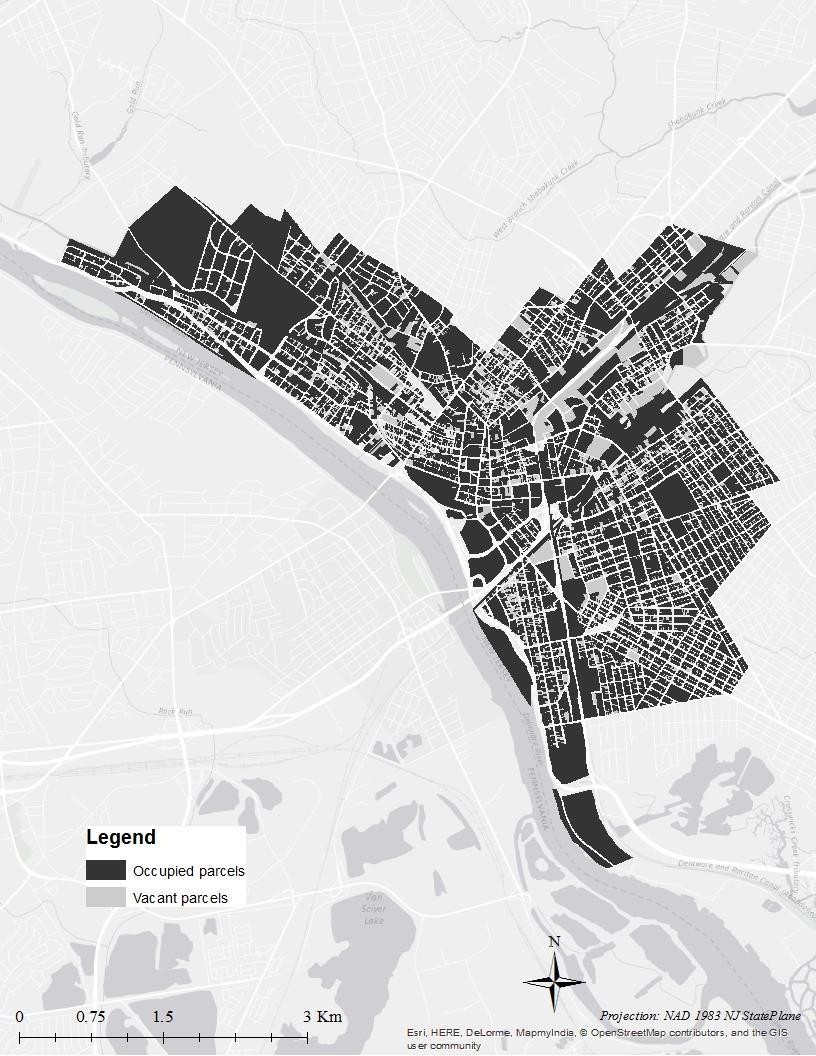
 DownLoad:
DownLoad: 